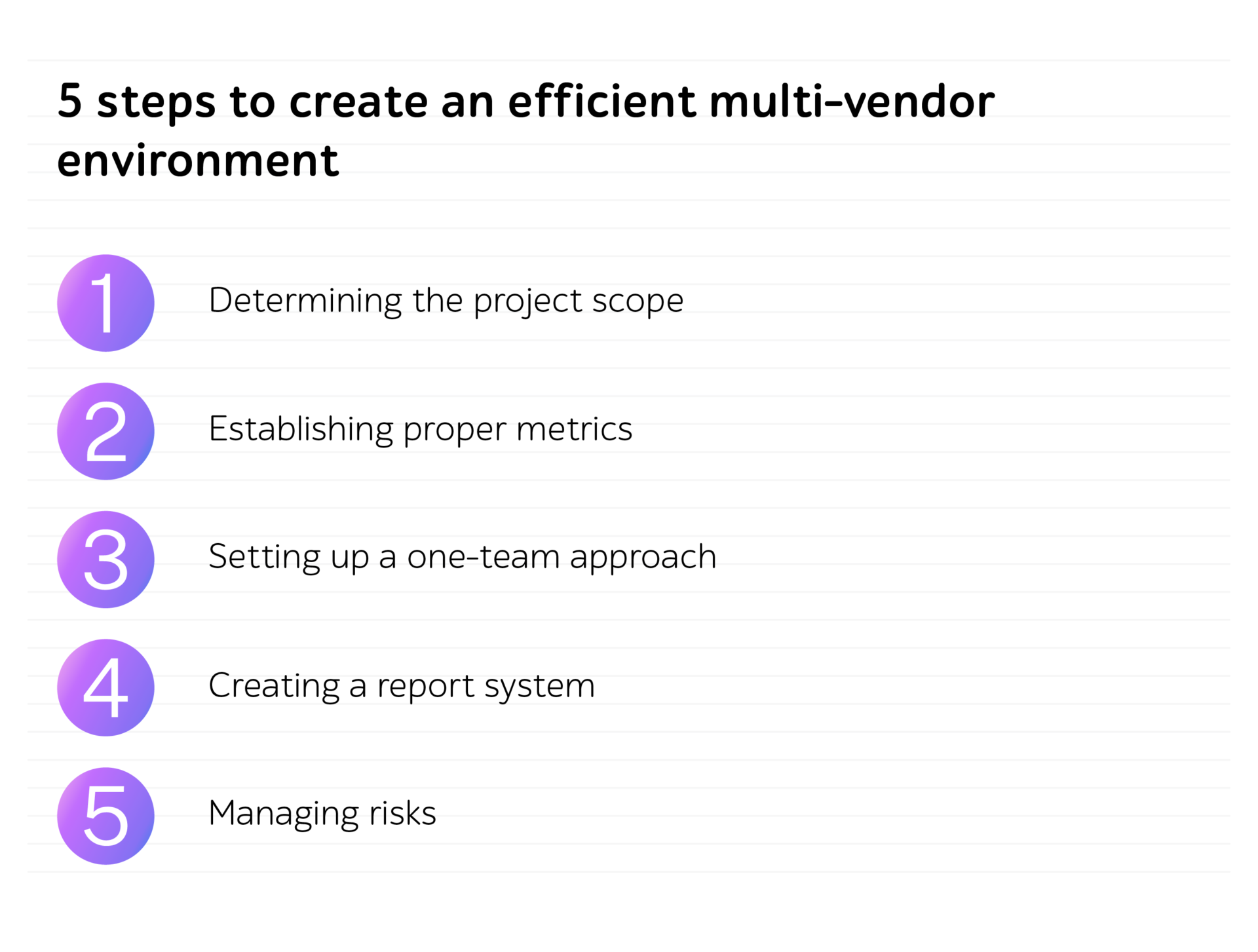
Optimizing telecom budgets with QA outsourcing: everything you need to know. Part 2
In this blog post, we continue our conversation on how QA outsourcing helps optimize telecom’s quality assurance expenses.
In this article, we’ll cover the following:
- What type of QA team to choose based on your unique telecom needs
- Best practices for working in a multi-vendor environment and addressing challenges.
Dedicated or project team models: which one is the best fit?
Dedicated (DTM) and project (PTM) teams are business models, allowing the client to expand the capabilities of the existing internal team while curtailing QA costs. A DTM fits for long-term projects with a high degree of uncertainty (e.g., incomplete or missing documentation), where the product develops by iterations. PTM is good for smaller assignments, where the amount of testing scope won’t be as broad, and the goal is clear.
For example, if a telecom company develops a complex product involving several systems and software that regularly roll out new features and needs ongoing testing, then the DTM approach is the right choice. It helps attract domain experts with the right skillset who easily adjust to all project changes, set up and monitor the testing infrastructure and processes themselves, and propose improvements where possible. However, the choice of the final team depends on the main goal. So, if the primary aim is to accelerate the release of IT solution, the organization should introduce a dedicated test automation team.
Another situation: a telco provider has a billing solution, but it’s mission-critical to verify only one of its components, e.g., performance that won’t take more than half a year. In this instance, it’s more cost-effective to consider a PTM.
Engaging only senior specialists with vast experience in the QA field may be costly, as the statistics show the annual salary reaches up to $132,000. Involving both top and junior engineers may be the best path forward, creating a balanced team that works effectively while keeping the budget in check.
Establishing a multi-vendor environment: 3 challenges to consider
Since telecom programs often require the engagement of specialists with different competencies and skills, companies outsource multiple teams. Let’s imagine that TT&A, our hypothetical telco company, turned to two suppliers simultaneously to acquire software development and QA services. Going beyond traditional workflows and operating in a multi-vendor environment, the provider here would face several challenges.
Challenge #1 Environment management
If businesses want to maintain strict coordination, they must handle all managing and controlling activities. However, they should realize that these tasks take up time, possibly forcing a distraction from their primary responsibilities.
Another option is to transfer these activities to a supplier ― here, it’s vital to opt for the one who has already worked in a similar environment and has experience in monitoring and fine-tuning the workflow processes.
Challenge #2 Synchronization of processes and priorities
If suppliers are not aware of their priorities and the requisite task sequence, it leads to a lack of synchronization, slowing down all operational processes.
Companies should clearly set goals for each vendor before the work begins.
Challenge #3 Interaction between teams
Do the outsourced teams cooperate with each other? How effective is this communication? Make sure that vendors are not working in isolation, as this results in disharmony and delays with respect to the end product delivery.
Businesses need to hold regular meetings, helping providers cooperate and discuss the challenges at hand.
5 steps to establish an effective multi-vendor environment
Here is our step-by-step plan on how to manage the work of several third-party teams within a multi-vendor environment.

- Determining the project scope. Prior to reaching out to vendors, it’s core to define the main goals as well as the volume of activities to perform. This helps set the right priorities for outsourced specialists.
- Establishing proper metrics. Running a project without monitoring progress is extremely risky. KPIs enable tracking both vendors and processes as a whole: companies can set up qualitative benchmarks to measure the performance of experts involved and quantitative ones as well to ensure that everyone knows the proper scope of tasks and responsibilities to undertake.
- Setting up a one-team approach. When functioning in a multi-vendor environment, suppliers run the risk of not communicating with each other. To address this problem, the product owner can create a team culture by incorporating regular meetings that allow discussing operational issues and building better rapport. This improves overall productivity and helps achieve a common goal.
- Creating a report system. To keep the client informed about providers’ activities, it’s advisable to introduce a special procedure: each vendor makes a weekly performance report with a detailed description of the work done, problems encountered, and suggestions for solving them. This level of detail is all upside and only strengthens the process. Suppliers should also be involved in regular meetings to discuss challenges and ways to address them.
- Managing risks. To make each outsourced company assume proper responsibility, the product owner may adopt a set of regulatory guidelines and standards as well as penalties for non-compliance.
Bottom line
Outsourcing software test requirements to a trusted QA partner makes sense for telecoms. Doing so pays performance dividends as much as it economizes telco budgets allocated for ensuring smooth product roll out. A key takeaway to remember is that the QA vendor takes care of four core aspects highlighted above: employment process, software assessment, QA activities setup, team agility and scalability.
If you’re ready to boost your telecom product quality with professional QA support and expertise, reach out to the a1qa team. We’re here to help you hit benchmarks and achieve your business goals. Let’s connect!








